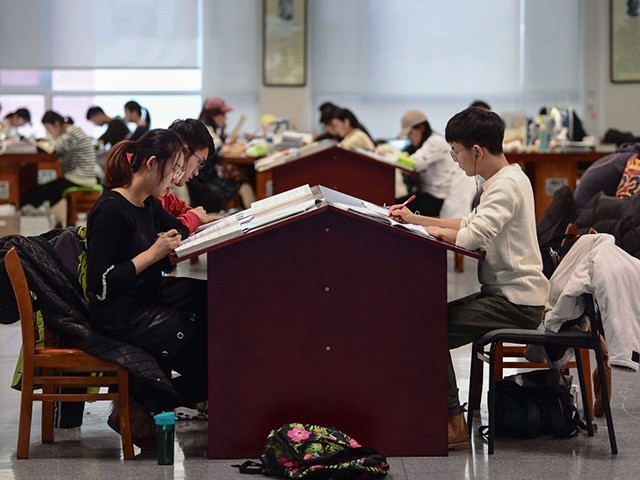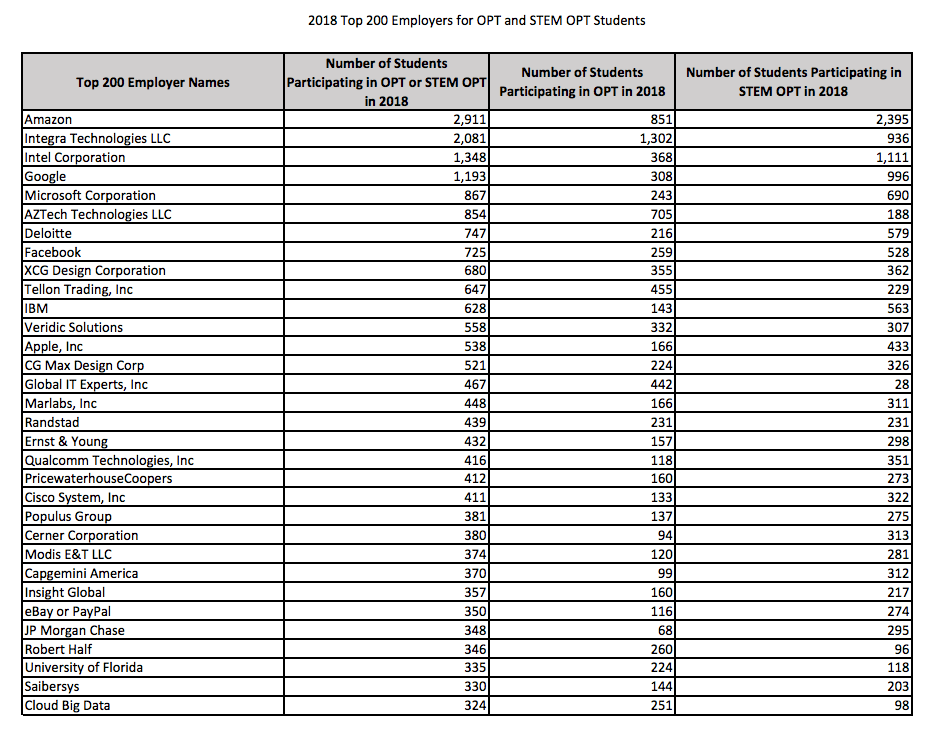Federal data shows that roughly 480,000 Chinese students studied in the United States in 2018, delivering more than $10 billion in fees to universities nationwide.
China is the leading source of foreign students, far ahead of India’s 250,000 students, Korea’s 90,000 students, and Saudi Arabia’s 6o,000 students. Ten European countries provided fewer than 100,000 students, according to the visa data provided by the Department of Homeland Security (DHS).
Amid rising concern about China’s coronavirus, the huge inflow creates healthcare problems for U.S. universities, but also for the many companies that have hired Chinese graduates in place of Americans.
Many of the foreigners come to the United States to get work permits and U.S. jobs, mostly via the Optional Practical Training (OPT) program, which is open to foreign graduates of U.S. universities. For example, the DHS data showed that Facebook hired 725 of the foreign OPT workers in 2018, alongside several hundred new H-1B visa workers.
Overall, the inflow of foreign students dipped by just 1.7 percent in 2018, and the award of the work permits nudged down by less than one percent.
In 2017, 349,542 foreign students and graduates held OPT; OPT science, technology, engineering, and mathematics (STEM); or Curricular Practical Training (CPT) work permits.
In 2018, 346,739 foreign students and graduates held OPT, OPT STEM, or CPT work permits.
The DHS report stated:
There were 145,564 pre- and post-completion optional practical training (OPT) students with both an employment authorization document (EAD) and who reported working for an employer in calendar year 2018, compared to 152,681 in calendar year 2017—a nearly five percent decrease.
There were 69,650 science, technology, engineering and mathematics (STEM) OPT students with both an EAD and who reported working for an employer in calendar year 2018, compared to 64,481 in calendar year 2017—more than an 8 percent increase.
There were 151,525 curricular practical training (CPT) students with both an EAD and who reported working for an employer in calendar year 2018, compared to 132,380 in calendar year 2017, more than a 14 percent increase.
The report does not say how many of the OPT and CPT workers are Chinese, but an Indian official said 50,000 Indians have work permits via the programs. In contrast, Indians get roughly 70 percent of visas in the H-1B program, which keeps at least 900,000 foreign graduates in U.S. white-collar jobs.
Amazon led the DHS 2018 list of hiring companies by employing 2,911 OPT foreign workers and 691 CPT workers.
Intel employed 1,348 OPT workers and 535 CPT workers.
Google employed 1,193 OPT workers and 1,051 CPT workers.
Microsoft employed 867 OPT workers and 580 CPT workers
Deloitte employed 747 workers and 531 CPT workers.
IBM employed 628 OPT workers and 315 CPT workers.
Many Chinese students also work as post-docs in university research laboratories, so reducing the incentive for U.S. science managers to compete for U.S. graduates by offering higher pay.
Careless US estb. lets China hire thousands of scientists in the US, incl. many employed by US taxpayers, to steal tech by the boatload, admits (far too late) bipartisan Senate report.
No gov't or Ivy League managers are fired.
No visa program is frozen.https://t.co/cEunR3gpBn— Neil Munro (@NeilMunroDC) November 23, 2019
Many of the foreigners hired by these elite firms got three-year OPT STEM work permits after graduating from technology-related courses at U.S. universities. The work permits for OPT graduates and CPT students last just one year.
The hiring of OPT and CPT workers displaces American graduates, who are forced to seek lower-wage, lower-prestige jobs, often in cities far from Silicon Valley and other U.S. technology centers.
The inflow of foreign students dropped slightly from 2017 to 2018, while the inflow of Indian workers rose, according to the DHS report:
[The number of] students was 1,551,373 in calendar year 2018. This was a decrease of 1.7 percent from calendar year 2017.
…
Of these countries, only the number of students from India increased from 2017 to 2018 (+4,157). The number of students from China (-147) and Republic of Korea (South Korea) decreased (-6,403) over the same period.
University presidents are partnering with https://t.co/rMcu0vygjZ investors to import more foreign workers for the jobs needed by the universities' US graduates.
This garish conflict of interest may get a reaction from American students & state taxpayers.https://t.co/Cni6K4r5j1— Neil Munro (@NeilMunroDC) December 4, 2019


COMMENTS
Please let us know if you're having issues with commenting.